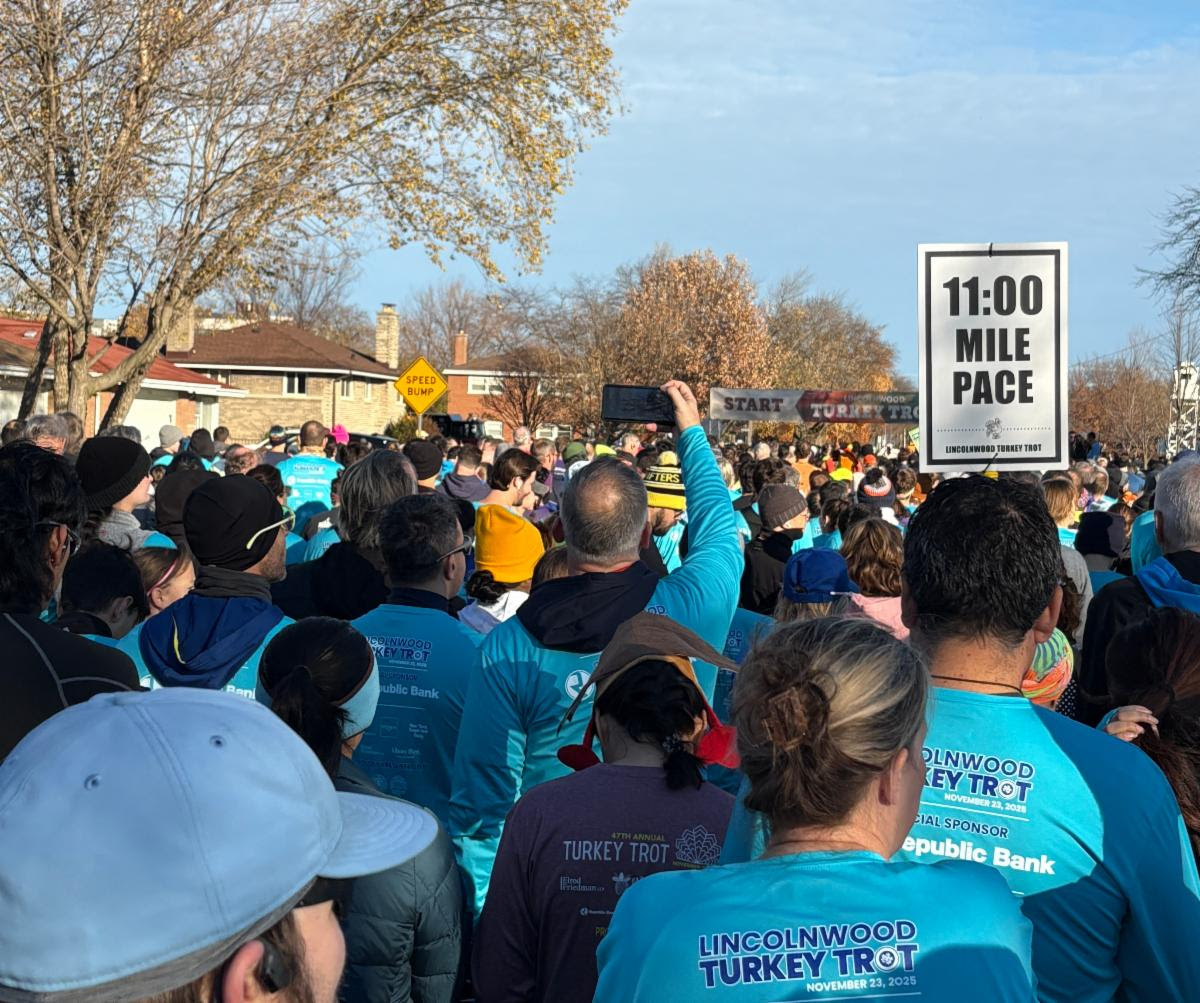Finding Gratitude in the Struggle to Move
As I was running the 5k at a comfortable pace (at my 13:30 minutes per mile pace, lol) in the Lincolnwood Turkey Trot this year, my mind wandered.
Suddenly, I was back in high school — trying to run a mile.
Then back in 5th grade — struggling through the 50-yard dash.
In those moments, I realized something unexpected: I’m deeply grateful for my PE teachers, Mr. Pederson and Mrs. Holmes.
But not for the reasons you might think …
The Awkward Kid in PE Class
That 50-yard dash was part of the President’s Physical Fitness Test. I was one of the slowest students. There wasn’t a single test I could pass — just a question of which one would be less awful.
Anyone else remember dreading the arm hang (or pull-ups for the guys), or the sit-and-reach?
And that mile run? It was part of the High School PE track and field unit. I’d walk as soon as we got out of the teacher’s view. With each lap around the school I felt like I was going to die.
So why am I grateful for these memories? Those early struggles became a lifelong motivator for finding successful ways to be active.
How Our Experiences Shape Our Abilities
The winded, slow running? It was rooted in my multiple bouts of pneumonia in childhood, which left my diaphragm muscle functioning poorly, and my lung capacity limited.
I loved being outside, though. I rode my bike everywhere, and swam whenever I could. Those activities felt freeing — so why did PE class feel so defeating? It took me years to understand the mismatch.
These school-based experiences taught me early on how it feels when your body doesn’t cooperate. In contrast to the ease that accompanies doing a task when your body is able to work well. My body did not work well for running, so most sports were not easy.
Most fitness professionals assume that our bodies work like the textbook says. In reality there are so many reasons why a body does not. (Hint – your surgeries, injuries, illnesses, and/or birth traumas.)
This realization is why I’m so passionate about helping your muscles find better ways to work, so being active feels easier.
After all, being active is so essential for our well-being!
Rediscovering What My Body Can Do
Today, with the help of Bridging, I move in ways that feel right for me:
- 🏃♀️ I can run — at my own pace, with progressive training.
- 💪 I can strength train — focusing on consistency, not competition.
- 🚶♀️ I can walk — 4–6 miles a day, something I built up slowly.
- 💃 I can dance — and I give myself grace as I learn new steps.
These are small victories that support lifelong wellness. It took years to figure out this mix and build the habits! You can too!
Why I’m Sharing This
I share this because many of you tell me you feel “off” when you move — unsteady, awkward, or limited after surgery or injury. You may wonder why your kids have such a hard time with seemingly simple activities.
- Maybe you’ve given up certain activities you used to love.
- Maybe you’ve told yourself, “That’s just getting older.”
- Maybe your kids are “clumsy and unmotivated.”
- Maybe your kids dread PE, just like I did.
But that’s not the full story.
If your muscles are out of sync from old injuries, medical procedures, or developmental quirks, your movement can change. The key is reconnecting how your muscles work together — that’s exactly what the Bridging® Technique does.
Your Turn
What experiences shaped how you think about being active? I’d love to hear your story.
Email me to share your frustrating experiences with movement and staying active.
And if your body feels out of sync or you’ve stopped doing what you love because it’s painful or awkward — let’s change that.
Or, does your child struggle with PE class? There may be very real reasons, which can change!
👉 Schedule a Bridging session and rediscover what your body can do — comfortably, confidently, and joyfully.

